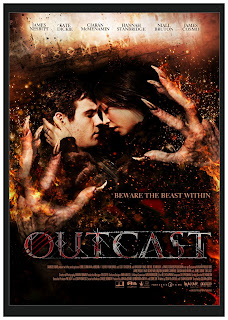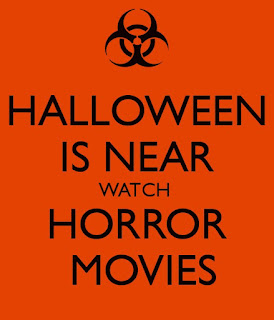Just yesterday, my friend Dennis Fischer referred me to an article entitled "Have horror movies hit a new golden age?" It reads, in part,"Over the past several years, horror has pivoted decisively in a new direction, thanks largely to an injection of new energy from Europe (especially the bizarre richness of recent Spanish horror cinema) and the indie-film fringe. In what we might call the “Paranormal Activity” era, slasher films and “torture porn” (a phrase that was never quite fair) have faded away, and the biggest horror hits have been designed as spooky thrill rides, built on innovative technique, narrative suspense and clever surprises, but hardly at all on gore or out-and-out sadism." Sounds hopeful, right? But author Andrew O'Hehir also adds that "almost nobody's paying attention."
Plenty of websites have devoted the month of October to celebrating horror movies, but most of them are celebrating the familiar classics. That was my first inclination too, but ultimately I decided to tackle horror films made in the last five years. Why? Because I believe that we are in a new golden age of horror. I don't know that any of the films I reviewed this month will ever be regarded as "classics" of the genre... but I don't think that's a reflection on the quality of the films themselves. I think it's more of a reflection on the fact that "almost nobody's paying attention" -- because most of the films I saw were smart, innovative and surprisingly well-crafted.
I admit that I'm as jaded as most horror fans. Often I feel overwhelmed by the general sense that new releases (dominated by the obvious sequels, remakes, reboots and reimaginations) are hopelessly derivative. What I learned this month is that there's a big difference between a horror movie that's derivative and a horror movie that starts out on familiar ground. Almost all of the movies I watched were familiar in the first act.... and I usually appreciated that. The familiarity reassured me that the filmmakers know and respect the genre. The best of those filmmakers veered into unfamiliar territory with their second and third acts. That's what I look for new horror movies... Something that surprises me. I was not disappointed this Halloween. In fact, I was consistently more impressed with the films I watched than I ever dreamed I would be.
Advertising campaigns often do a major disservice to new horror films by playing up the familiar. It's our job, as horror fans and critics, to point out when a new movie goes beyond the expected. This month, I wrote about ghosts, zombies, aliens, vampires, trolls, witches, demons, sociopaths, telepaths, devil worshippers and killer kids -- all the old monsters, but many of them with a new look. The Australian mockumentary LAKE MUNGO is simpler than most ghost movies, but I found it extremely effective -- especially the final twist. Likewise, LOVELY MOLLY tricked me into thinking it was one thing, and then pulled the rug out from under me. PONTYPOOL is the best zombie movie I've seen in years... and it's not even a zombie movie. THIRST made me realize that even vampires can conquer new territory.
Probably my favorite films in the lot were those mind-bending thrillers that reminded me of THE TWILIGHT ZONE. If horror fans had a nickel for every time that filmmakers have tried -- and failed -- to capture the mysterious sensibility of THE TWILIGHT ZONE, we'd all be rich... but TRIANGLE, THE CALLER, and even YELLOWBRICKROAD managed to pull it off. Not perfectly, mind you, but close enough that I was genuinely excited to be a horror fan. I agree with O'Hehir that we're in the midst of a steady wave of new horror films built on innovative technique, narrative suspense and clever surprises. Most of these are indie films and foreign films, which have very limited marketing and distribution. It's our job to find and celebrate these films, so we can have more in the future! Hollywood is only devoting its resources to sequels, remakes, reboots and reimaginations because that's what horror fans are paying for. So this Halloween, think outside the box. If you need a recommendation, here's the full list.
(PS - I'd like to say thanks to those blog readers who recommended films to me. I still have a few more recommended titles in my Netflix queue, but I promised my wife I'd take a break at 30... so we can get caught up on DEXTER and THE WALKING DEAD...)
HAPPY HALLOWEEN!



























